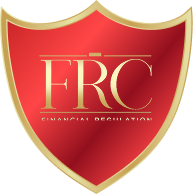In recent years, businesses worldwide have been increasingly pressured to focus not only on profitability but also on their broader role in society. This has led to a surge in discussions around Corporate Social Responsibility (CSR) and Environmental, Social, and Governance (ESG) criteria, two terms often used interchangeably but with distinct meanings and implications for businesses and stakeholders alike.
While CSR has traditionally focused on the ethical obligations of companies to contribute to society and reduce negative externalities, ESG refers to a framework that assesses a company’s performance across three key areas: environmental impact, social responsibility, and governance practices. These two concepts are intertwined, with CSR often acting as the foundational philosophy for implementing ESG goals within a business.
In this article, we explore how CSR and ESG interact, the role they play in shaping corporate strategies, and how businesses can leverage these practices to drive sustainability, enhance stakeholder trust, and create long-term value. By looking at the growing regulatory landscape, investor expectations, and shifting consumer demands, we will uncover the business case for aligning CSR and ESG initiatives.
Corporate Social Responsibility (CSR) is a business model in which companies integrate social and environmental concerns into their operations and interactions with stakeholders. The term emerged in the mid-20th century, with businesses realising that they had a responsibility beyond profits. Traditionally, CSR was about philanthropy—corporations would donate a portion of their profits to charitable causes, sponsor local events, or support community development projects.
Over time, however, CSR has evolved into a more comprehensive and integrated approach. Today, it encompasses a company’s entire operations and includes the ethical treatment of workers, reducing environmental footprints, enhancing customer well-being, and promoting social equity. Many companies now see CSR not as a mere add-on but as a core business strategy that aligns with their long-term goals.
Some of the key principles that guide CSR practices include:
Ethical Business Practices: Companies are expected to operate with integrity, transparency, and fairness in all their business dealings, whether it involves employees, customers, or suppliers.
Environmental Responsibility: Reducing environmental impact through measures like sustainable resource use, waste management, and efforts to combat climate change are integral to CSR.
Community Engagement: Businesses are increasingly investing in local communities by addressing social issues such as education, poverty, health, and employment.
Employee Welfare: A strong focus on the well-being of employees, including fair wages, safe working conditions, and opportunities for personal and professional growth, is essential to CSR.
In the traditional view, CSR is seen as a voluntary and philanthropic activity that a company chooses to engage in for the betterment of society. While CSR actions may align with some environmental, social, and governance factors, they are often disconnected from a company’s core operations or its financial reporting. CSR activities were often discretionary, with businesses engaging in these initiatives to build a good reputation or enhance their brand image rather than out of regulatory or financial necessity.
Environmental, Social, and Governance (ESG) criteria are a set of standards used by investors to assess a company's operations and performance across three key areas:
Environmental (E): This refers to how a company manages its environmental impact, such as reducing its carbon emissions, conserving water, using renewable energy, and minimizing waste. It also includes how companies prepare for environmental risks, such as the impact of climate change or resource scarcity.
Social (S): The social aspect of ESG looks at how a company interacts with people and communities. This includes issues like labour practices, employee relations, diversity and inclusion, human rights, and community engagement.
Governance (G): Governance refers to the practices that guide how a company is directed and controlled. It includes aspects like board diversity, executive compensation, shareholder rights, transparency, and the company's approach to ethics and compliance.
Unlike CSR, ESG is not limited to charitable actions or community engagement. It is deeply integrated into a company’s core operations, risk management, and decision-making processes. ESG concerns are increasingly seen as material factors that can have a significant impact on a company’s long-term financial performance.
For example, a company with poor governance practices might experience reputational damage, leading to reduced investor confidence and lower stock prices. Similarly, companies that do not address environmental risks, such as those linked to climate change, may face higher operational costs and regulatory scrutiny. On the other hand, businesses with strong ESG practices tend to attract investment, retain customers, and improve their market position.
The growing importance of ESG criteria can be attributed to the increasing recognition that these factors are closely linked to long-term financial performance. Investors are increasingly looking for companies with strong ESG practices because they are seen as less risky and more likely to provide sustainable returns.
The integration of ESG into financial analysis helps investors evaluate the future performance potential of companies, considering not just the financial returns but also the broader impact of their activities. In addition, regulatory frameworks, such as the EU Taxonomy Regulation and the UK’s Financial Conduct Authority (FCA) guidelines, are pushing companies to disclose ESG information, making it easier for investors to assess corporate performance based on these factors.
While CSR and ESG are different concepts, they are closely related and often complement each other. CSR is the broader philosophy that drives ESG practices, and companies with strong CSR initiatives often find it easier to align with ESG goals. However, there are notable differences between the two approaches.
CSR initiatives are often the starting point for companies to incorporate ESG principles into their operations. For example, a company with a strong CSR focus on reducing its environmental impact will find it easier to implement ESG strategies such as carbon footprint reduction, sustainable sourcing, and waste minimisation. Similarly, a company that has already invested in community engagement or diversity programmes as part of its CSR strategy may be well-positioned to meet the social criteria within the ESG framework.
Many businesses initially engage in CSR activities to meet ethical expectations or to enhance their brand image. However, integrating these CSR initiatives into a formal ESG strategy can help organisations create a more sustainable business model that not only benefits society but also enhances financial performance and shareholder value.
CSR activities can contribute to meeting specific ESG criteria. For example:
Environmental Responsibility (E): Companies that engage in CSR activities like planting trees, reducing waste, or supporting renewable energy projects contribute to meeting the environmental standards of ESG.
Social Responsibility (S): CSR activities such as investing in employee well-being, promoting diversity and inclusion, and supporting local communities directly align with the social aspects of ESG.
Good Governance (G): A company with strong CSR practices may also demonstrate good governance by adopting ethical business practices, ensuring transparency in financial reporting, and prioritising stakeholder interests.
While CSR activities were often voluntary and informal, ESG reporting is increasingly becoming a regulatory requirement. For example, in the UK, the Financial Conduct Authority (FCA) now mandates that listed companies disclose their climate-related risks in line with the Task Force on Climate-related Financial Disclosures (TCFD) recommendations. Similarly, the EU’s Sustainable Finance Disclosure Regulation (SFDR) requires asset managers to disclose how ESG factors are incorporated into their investment processes.
As regulatory requirements around ESG reporting grow, businesses must move from voluntary CSR initiatives to more formalised and measurable ESG strategies. This shift ensures that CSR activities are not just ad hoc but are integrated into the broader business strategy and aligned with long-term financial goals.
One of the main reasons for aligning CSR and ESG goals is the growing demand for transparency from stakeholders, including investors, customers, employees, and regulators. Companies that demonstrate a commitment to social responsibility and sustainability build trust with their stakeholders, which can lead to a competitive advantage. Consumers increasingly prefer businesses that prioritise environmental and social issues, and investors are more likely to back companies with robust ESG strategies.
There is a growing body of evidence suggesting that companies with strong ESG practices perform better financially in the long run. Companies that address ESG factors proactively are better equipped to manage risks related to climate change, regulatory changes, and social issues. For instance, a company that adopts energy-efficient technologies and reduces its carbon emissions may not only lower costs but also avoid potential regulatory penalties related to environmental compliance.
Furthermore, ESG-focused companies are more likely to attract long-term investors who prioritise sustainability and risk mitigation. The integration of ESG principles can help businesses identify growth opportunities in new markets, such as renewable energy, sustainable agriculture, and green technologies.
Corporate Social Responsibility (CSR) and Environmental, Social, and Governance (ESG) practices are integral to today’s business landscape. While CSR provides the foundation for companies to act ethically and contribute to society, ESG provides a structured framework for assessing and managing sustainability risks and opportunities.
The growing regulatory pressures, coupled with increasing investor demand for transparency, are pushing businesses to align their CSR activities with ESG criteria. This alignment is not only beneficial for the environment and society but also enhances financial performance by mitigating risks and attracting investors.
In the future, the lines between CSR and ESG will continue to blur as more companies embrace sustainability as a core component of their business strategy. By integrating CSR into their ESG frameworks, businesses can drive long-term value, strengthen relationships with stakeholders, and contribute to a more sustainable and equitable global economy.
Be the first to know about new class launches and announcements.


Financial writer and analyst Ron Finely shows you how to navigate financial markets, manage investments, and build wealth through strategic decision-making.
